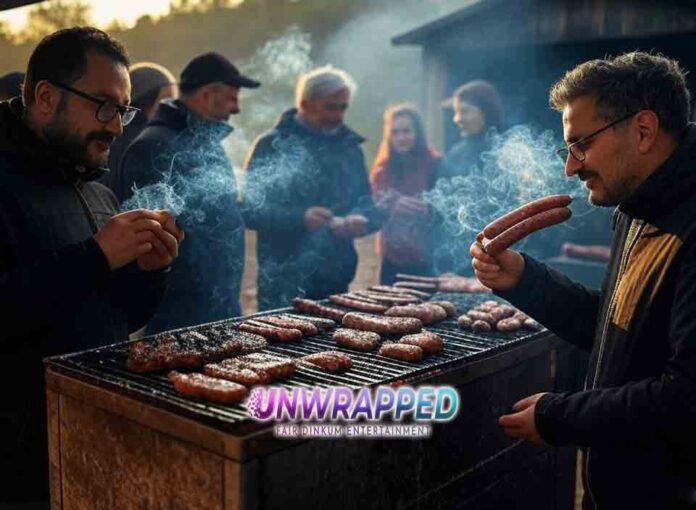Smoking is an ancient art of preserving and flavoring food, and today, it remains a cornerstone of barbecue culture. But when it comes to smoking meats, there’s more than one way to achieve smoky perfection. The two primary methods—cold smoking and hot smoking—each bring unique characteristics to your culinary creations.
So, how do you decide which method is best for your next cookout? This guide dives into the differences between cold smoking and hot smoking, their pros and cons, and how to choose the right technique for your meats.
Understanding Cold Smoking
What is Cold Smoking?
Cold smoking is a method of infusing food with smoky flavor without cooking it. It involves exposing the meat to smoke at a low temperature, typically 68–86°F (20–30°C), for extended periods. Because the food doesn’t cook, cold smoking is often used in conjunction with curing or drying.
Common Foods for Cold Smoking:
- Bacon
- Salmon (lox)
- Sausages
- Cheese
- Nuts
Benefits of Cold Smoking
- Intense smoky flavor: The longer smoking time allows the smoke to deeply penetrate the food.
- Versatility: Beyond meats, cold smoking works well for cheeses, nuts, and even vegetables.
- Preservation: When combined with curing, cold smoking helps extend the shelf life of meats.
Challenges of Cold Smoking
- Requires curing: To ensure safety, meats must be cured before cold smoking to prevent bacterial growth.
- Equipment needs: A dedicated cold smoker or smoke generator is often required to maintain low temperatures.
- Not suitable for all meats: Cold smoking doesn’t cook the food, making it unsuitable for cuts that require tenderness through cooking.
Understanding Hot Smoking
What is Hot Smoking?
Hot smoking involves cooking food while infusing it with smoky flavor. This method uses higher temperatures, typically between 225–250°F (107–121°C), and is a staple in barbecue cooking.
Common Foods for Hot Smoking:
- Brisket
- Pork ribs
- Chicken
- Turkey
- Fish
Benefits of Hot Smoking
- Cooking and smoking in one step: Hot smoking cooks your food while adding smoky flavor, making it a one-and-done process.
- Tenderizes meat: The low-and-slow cooking breaks down collagen in tough cuts, making them tender and juicy.
- Convenient for beginners: Hot smoking doesn’t require curing, making it more accessible for home cooks.
Challenges of Hot Smoking
- Limited food options: Hot smoking is best for meats and fish; it’s less effective for cheeses or delicate items.
- Requires temperature control: Maintaining consistent heat can be challenging, especially with charcoal smokers.
- Time-consuming: Depending on the cut, hot smoking can take several hours or even a full day.
Key Differences Between Cold Smoking and Hot Smoking
| Aspect | Cold Smoking | Hot Smoking |
|---|---|---|
| Temperature | 68–86°F (20–30°C) | 225–250°F (107–121°C) |
| Cooking Process | Does not cook the food | Cooks the food while smoking |
| Preparation | Requires curing or drying | No curing needed |
| Duration | Several hours to days | Several hours |
| Best For | Bacon, lox, sausages, cheese | Brisket, ribs, chicken, turkey |
Choosing the Right Smoking Method for Your Meat
When to Use Cold Smoking
Cold smoking is ideal for enhancing the flavor of cured or pre-cooked meats. Use it when:
- You want to create gourmet smoked bacon or lox.
- You’re smoking delicate items like cheese or nuts.
- You have the time and equipment for curing and low-temperature smoking.
When to Use Hot Smoking
Hot smoking is perfect for cuts that benefit from tenderizing while cooking. Use it when:
- You’re preparing large cuts like brisket, pork shoulder, or ribs.
- You want to serve food immediately after smoking.
- You prefer a straightforward smoking process without curing.
Safety Considerations for Cold and Hot Smoking
- Cold Smoking:
- Always cure meats properly to prevent bacterial growth.
- Use a smoke generator or a smoker with precise temperature controls to stay below 86°F.
- Hot Smoking:
- Use a meat thermometer to ensure proper doneness:
- Chicken: 165°F
- Pork: 145°F
- Beef (medium rare): 135°F
- Avoid over-smoking, which can create a bitter flavor.
- Use a meat thermometer to ensure proper doneness:
Recommended Equipment for Smoking
- Cold Smoking:
- Dedicated cold smokers (e.g., Bradley or Smoke Daddy).
- DIY setups with smoke generators and insulated boxes.
- Hot Smoking:
- Offset smokers for large cuts.
- Electric smokers for convenience.
- Kettle grills with a two-zone fire setup.
Signature Recipes to Try
Cold-Smoked Salmon
Ingredients:
- Fresh salmon fillet
- Salt and sugar (equal parts for curing)
- Dill (optional)
Instructions:
- Cure the salmon with a salt-sugar mixture for 24 hours.
- Rinse and pat dry.
- Cold smoke for 8–12 hours using alder wood.
Hot-Smoked Brisket
Ingredients:
- 10–12 lb brisket
- BBQ rub (salt, pepper, garlic powder, paprika)
Instructions:
- Season the brisket generously with the rub.
- Smoke at 225°F for 10–12 hours, spritzing with apple juice every hour.
- Rest for 1 hour before slicing.
Conclusion: Which Smoking Method is Right for You?
The choice between cold smoking and hot smoking depends on your culinary goals, the type of meat you’re preparing, and the time you have available. Whether you’re crafting gourmet cold-smoked salmon or a tender, hot-smoked brisket, both methods offer unique opportunities to create mouthwatering dishes.
Ready to Start Smoking?
What’s your favorite smoking method and why? Share your experiences and tips in the comments below! Don’t forget to subscribe for more expert grilling and smoking tips.
Let’s light the fire and create something extraordinary—one smoke ring at a time!
See Also: Troubleshooting Common BBQ Mistakes: From Dry Brisket to Bitter Smoke










